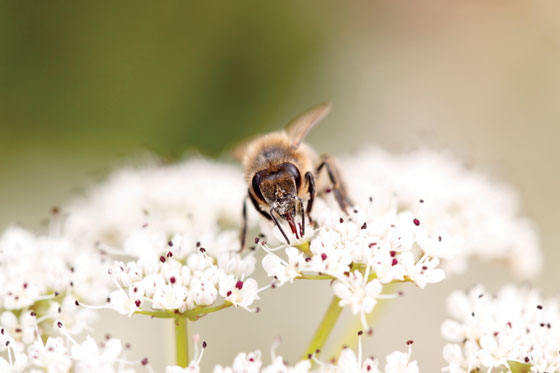From Charlie Sheen’s recent, eccentric behavior to Lindsay Lohan’s run-ins with the law to Tiger Woods’ reputation damage, insuring the rich and famous (and sometimes out of control) has never been easy. PropertyCasualty360.com takes us on a wild ride to look at specific insurance issues that affect those with a lot of money and, sometimes, a lot of risky behavior.
Author Archives: Emily Holbrook
No More Bees, No More Man?
Though there has been widespread media coverage of the massive die-offs of birds and fish throughout parts of the United States, there has also been a die-off of another species that has received less attention. The bumblebee population, not only in North America but around the world, has been dropping drastically since the mid 1990s. According to a three-year study of 73,000 museum specimens performed by the National Academy of Sciences, the population of four species of bumblebees has declined up to a worrying 96%.
Bees, who needs them? Everyone, actually. We are dependent on the buzzing creatures to pollinate the world’s food crops. “If the bee disappeared from the surface of the globe, then man would only have four years of life left. No more bees, no more pollination, no more plants, no more animals, no more man.” It has been said that Albert Einstein was the source of that dread-filled quote, though others argue its merits.
The source of the quote may be arguable, but what’s not arguable is the situation the world would be in if bees even come close to making the endangered species list.
Like honeybees, bumblebees rely on pollen as a source of protein and are widely used, and favored as opposed to honeybees, as pollinators for several multibillion-dollar commercial crops, such as blueberries, apples and tomatoes, along with various nuts and grains. Crops used as cattle and pig feed are also dependent on bees. In fact, bees are vital to the success of approximately 90 crops worldwide and one-third of the food we eat.
The problem is, researchers are unable to pinpoint a direct cause of the die-off. Some have pointed to the increasing use of pesticides, while others blame an exotic disease or a genetic malfunction. For the agriculture industry, the best risk management for now may be to put their resources towards finding the cause of the declining bee population and a possible solution . . . and fast.
Risk Management in the News
Some days there are a plethora of risk management topics in the news, other days, not so much. Today we are in luck as I’ve come across quite a few risk management-related news stories that I hope you find interesting.
- The National Institute of Standards and Technology has made two significant announcements relating to risk management. The first is Special Publication 800-39, which relates to managing information security risk. The second is a major revision to Special Publication 800-53, which analyzes recommended security controls for federal information systems and organizations.
- aiCIO published an article this morning announcing findings from the Credit Suisse Annual Hedge Fund Survey, which found investment risk to be the biggest worry amongst hedge fund investors. The Credit Suisse study supports earlier evidence from Preqin’s study of 60 hedge fund managers from Asia, the U.S., Europe and other parts of the world.
- The Evolution of Risk: What it Takes to Be a Risk Manager Today was published today by GovInfoSecurity.com, a source of government industry information and security related news and articles.
- Hank Prybylski, global financial services risk management leader at Ernst & Young, discusses how firms can manage regulatory and operational risk within their overall business strategies (see link to the video).
- NanoTechWire.com has published an article entitled, “The Risky Business of Innovation: A New Framework for Risk Management.” The piece focuses on how traditional risk management techniques are unable to keep up with technological advances.
As risk management continues to evolve, we will continue to see compelling news articles focusing the various ideologies encompassing the discipline. More discourse regarding risk management means more thought about the topic and, hopefully, more real-world implementation.
March Issue of Risk Management Now Online
Faithful readers: the March issue of Risk Management magazine is now online. The cover story focuses on five labs and research centers that make the world smarter, safer and more resilient. Other features explore the Consumer Product Safety Commission, greenhouse gas emissions and aircraft products liability and insurance.
Our columns explore topics such as the possibility of a California superstorm, how to evaluate absence policies, data privacy rules around the world and an engaging Q&A with Howard Kunreuther, director of the the Center for Risk Management and Decision Processes at the Wharton School.
If you enjoy what you seen online, you can subscribe to the print edition to enjoy even more content.
Please let us know what you think in the comments below. And stay tuned to the blog for even more coverage in the future. Lastly, you can follow the magazine on Twitter, “like” us on Facebook and join our LinkedIn group.




